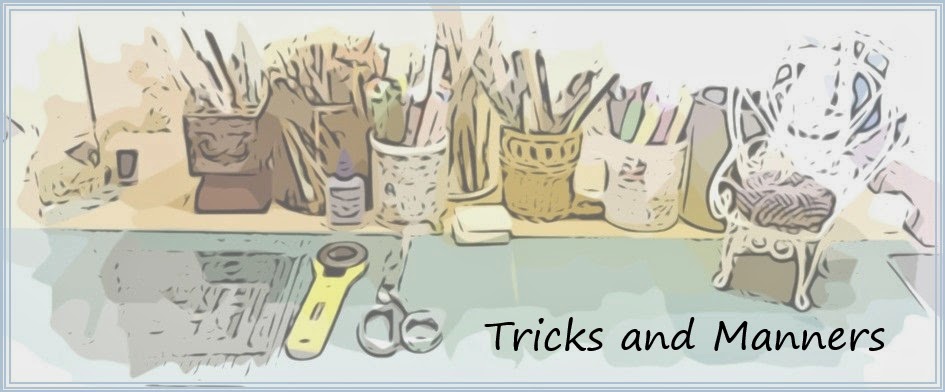Following is my fourth and final essay for the class. The topic is aleatory or "chance" poetry, and our assignment involved performing chance operations on any poem to create a new version of that poem and do a close reading of it.
Option A: The Mesostomatic (based on John Cage's Mesostics)
Visit the link to the Mesostomatic exercise: www.euph0r1a.net/mesostomatic/. Fill in the fields for the spine and textual data and select any number of mesostics before submitting. Please insert into the "textual data" field a URL (web address) for one of the poems we've read in ModPo or the URL of another poem that interests you. Insert a word or phrase or a name as the "spine." Using the Mesostomatic, you will be "writing through" the chosen poem.
Horatius at the Bridge
Hand
cOmmons seized
baR,
And
smoTe
below. MeanwhIle
tUscan
flaShing
cOmmons seized
baR,
And
smoTe
below. MeanwhIle
tUscan
flaShing
bAck
The
The
lighT, rank
beHind
likE,
beHind
likE,
Bright of
gold, fouR
wIth
measureD
ensiGns
sprEad.
gold, fouR
wIth
measureD
ensiGns
sprEad.
With its antique diction, gasping rhythm, and flickering images of war, this could be a fragment of some ancient eyewitness account.
Accidental though it may be, this version has grammatical integrity and a logical progression through the stanzas--a steady enlargement of the pictorial frame. First a hand, then a Tuscan soldier, then by synecdoche many Tuscans, then banners streaming above the assembled ranks of Tuscan soldiers.
It begins "in medias res" with a main character, the Roman hero through whose eyes we see the battle, but whom we know only by the action of his hand, seizing a bar and smiting the enemy below him. "Meanwhile" our mental eye is drawn upward again, because the Tuscans' armor reflects the light back upward, revealing rank upon rank of soldiers "bright with gold." The impression of vast expanse is heightened by the assonance of "light," "like" and "bright." As the picture expands to its maximum breadth with overarching ensigns coming into view, it also gains energy for a conclusive ending with the assonance of "measured ensigns spread," the nasal resonance of /m/, /n/, and /r/ in the same phrase, and the repeated stops of /d/ and /p/ in "measured" and "spread." These evoke, though don't quite speak, the word "dead" --can there be any fate for this outnumbered hero, but death?
The poem offers several other points that its phantom poet might have arranged on purpose: The ragged, staggered rhythm of the stanza breaks (8,2,3,6), not corresponding to any natural phrasing, suggests the lurching motions and confused disorder of battle. "Rank behind like" does the work of "rank upon rank," but is fresher and emphasizes the disciplined unity of the Tuscans. After this numerless multiplicity of soldiers, specifying that exactly four ranks have banners spread is a welcome contrast and realistic touch. The definite article does not always appear where expected, (eg. "seized bar" instead of "seized the bar") giving the utterance, depending on how you read it, what might be a breathless, hurried effect, or a stoic brevity.
Following is the source text (verses 34 and 35 of 70 ) by Thomas Babington Macaulay:
XXXIV
Now while the Three were tightening
Their harnesses on their backs,
The Consul was the foremost man
To take in hand an axe:
And Fathers mixed with Commons
Seized hatchet, bar, and crow,
And smote upon the planks above,
And loosed the props below.
Their harnesses on their backs,
The Consul was the foremost man
To take in hand an axe:
And Fathers mixed with Commons
Seized hatchet, bar, and crow,
And smote upon the planks above,
And loosed the props below.
XXXV
Meanwhile the Tuscan army,
Right glorious to behold,
Come flashing back the noonday light,
Rank behind rank, like surges bright
Of a broad sea of gold.
Four hundred trumpets sounded
A peal of warlike glee,
As that great host, with measured tread,
And spears advanced, and ensigns spread,
Rolled slowly towards the bridge’s head,
Where stood the dauntless Three.
Right glorious to behold,
Come flashing back the noonday light,
Rank behind rank, like surges bright
Of a broad sea of gold.
Four hundred trumpets sounded
A peal of warlike glee,
As that great host, with measured tread,
And spears advanced, and ensigns spread,
Rolled slowly towards the bridge’s head,
Where stood the dauntless Three.
The distilled, mesotic version of these stanzas actually does echo, recognizably, the action and tone of the original, but is pleasingly open and compelling. Stripped of the high-toned mythic quality, a real person seems to emerge.
I not only like this mesotic poem, I like the process of making it and the fresh language which resulted from the process, so different from what I usually produce, and so invigorating! This exercise has also increased my tolerance for tackling difficult poems: if I can't get everything out of one, I will nevertheless see what can be got, for have I not, on my own like Horatius, just made something like sense out of four computer-generated clusters, with measured ensigns spread?






